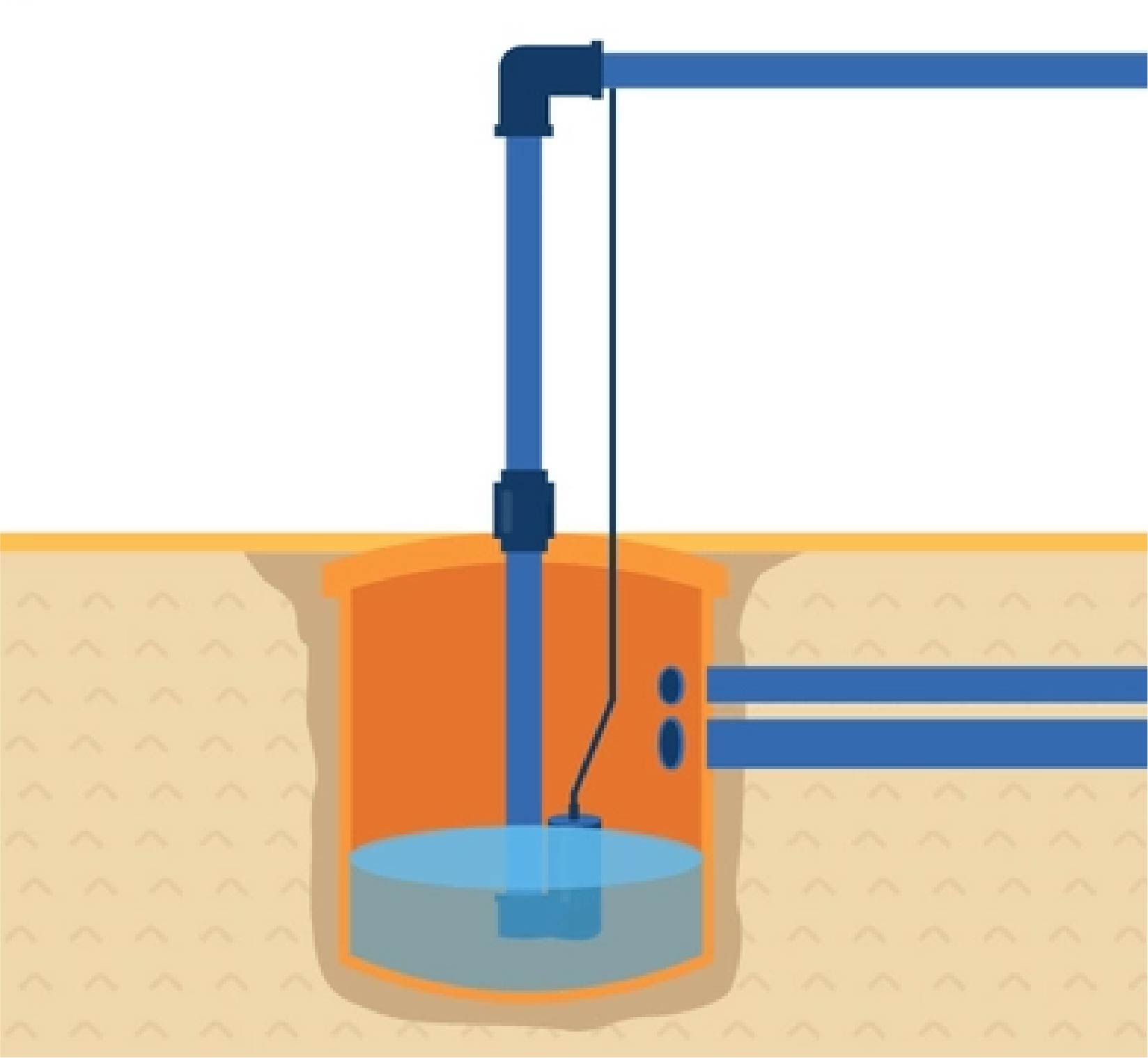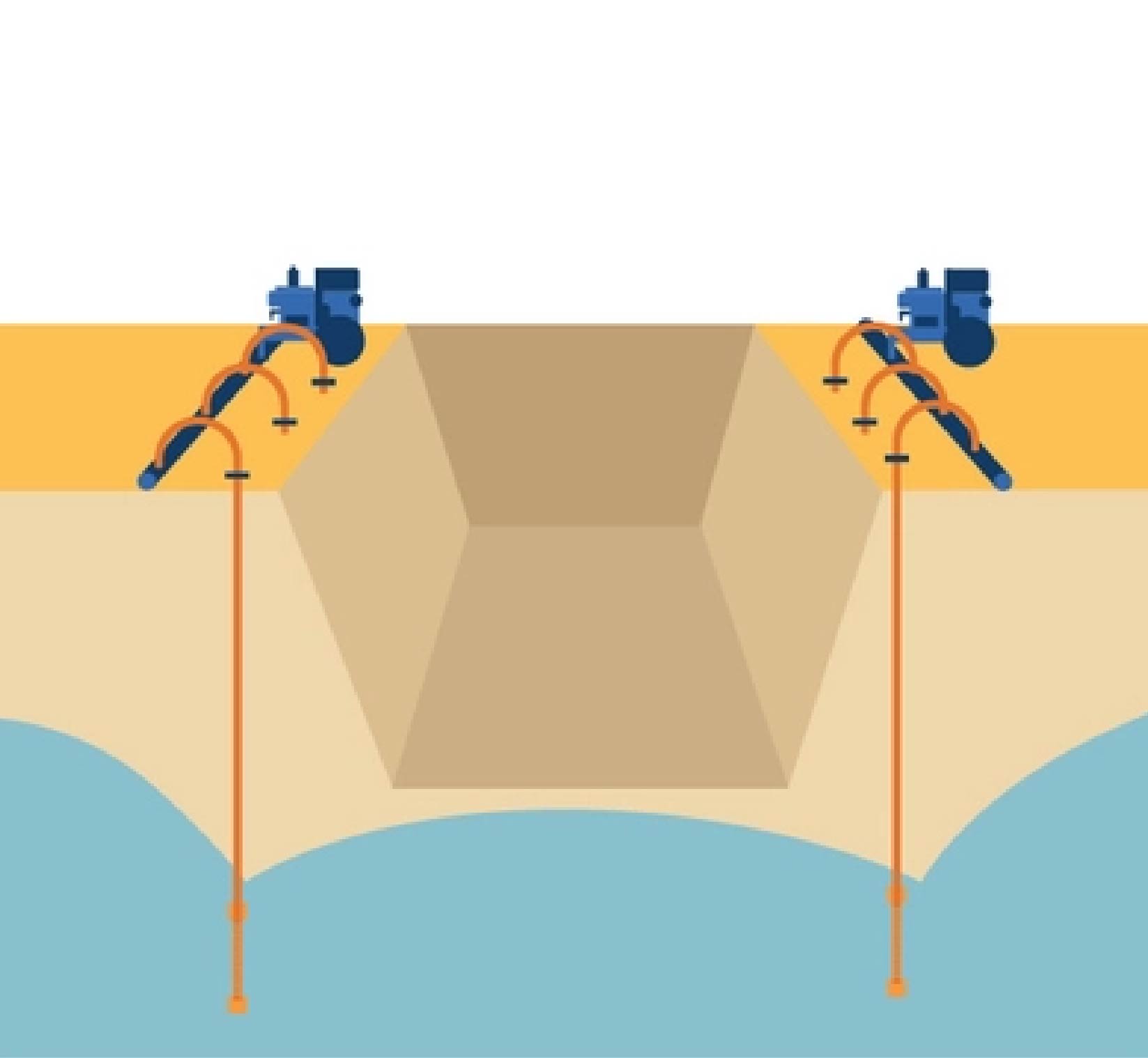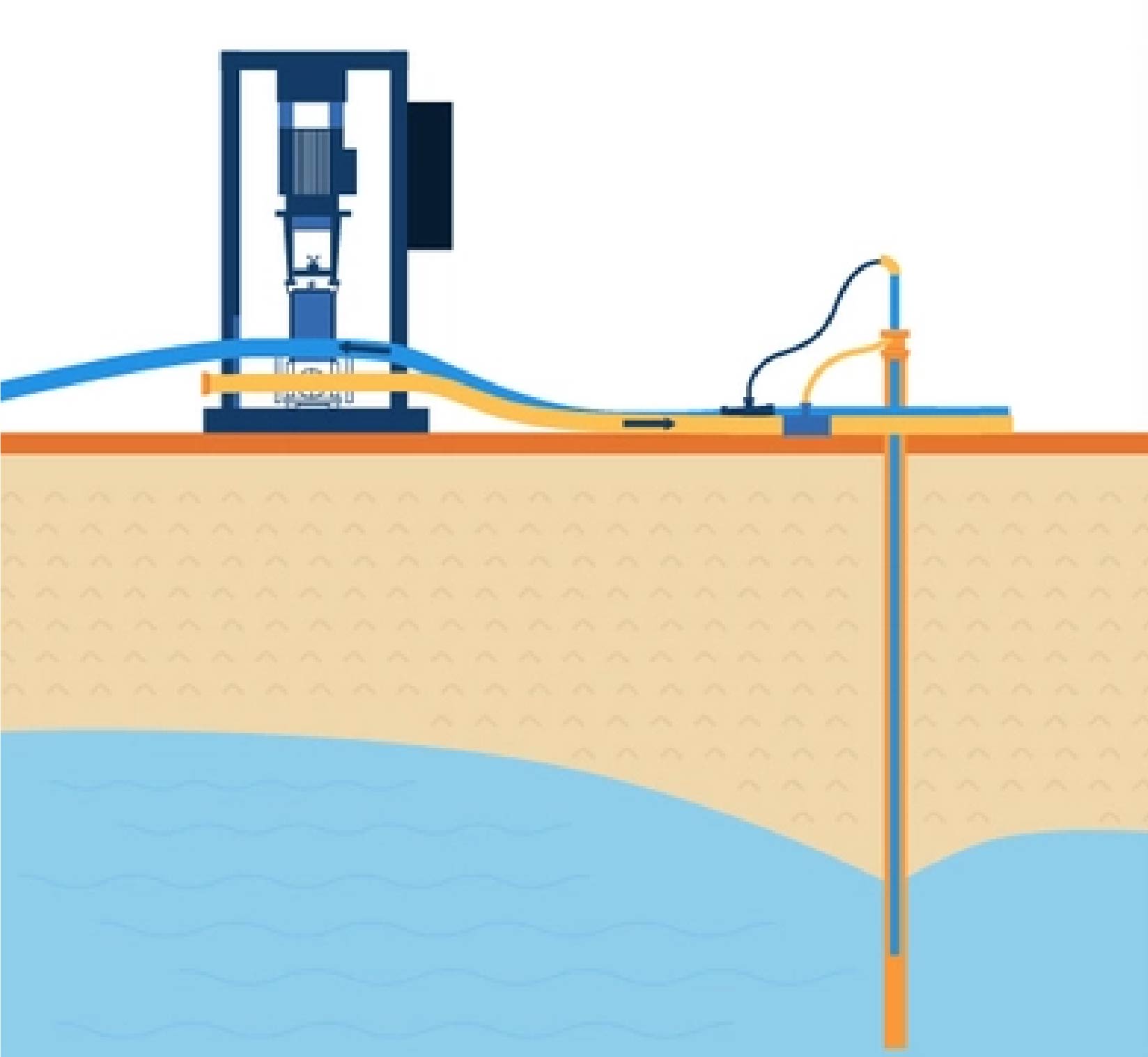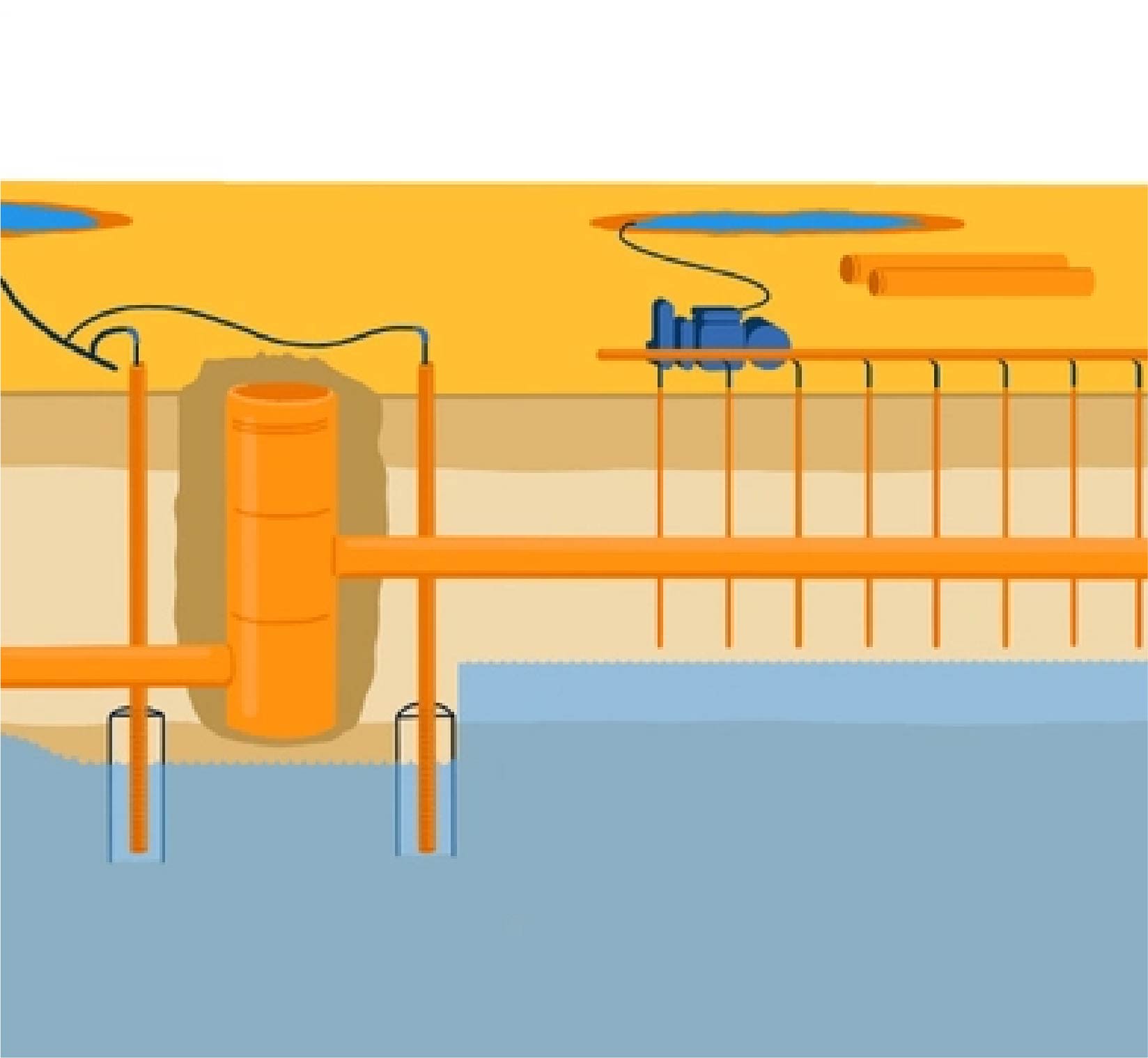With winter upon us, many construction projects located near or surrounded by a body of water will start. During the warmer months, these areas are busy with people enjoying activities such as boating, swimming, and fishing, making this time ideal for beginning any projects to improve next season for families and community members. When dealing with projects near water, majority of them have the first goal of creating a dry environment to start the project. This means contractors must dewater the excavation or general area to create a safe site for workers. However, extensive planning, inspections, and research must be done before any work can begin.
Dewatering is the process of removing water from a construction site and moving it to another place for the duration of the project. However, before any dewatering process can begin, multiple factors must be analyzed, such as area measurements and environmental restrictions. Firstly, the soil permeability of the designated dewatering site must be analyzed to determine the rate of flow of water through the soil. This helps contractors decide on the best way to not only construct structures for dewatering, but also how the dewatering process will be done. If the water being pulled out isn’t monitored, it could cause erosion and potentially a future collapse of the waterbed later, making the amount of water being pumped another factor. The future excavation required also needs to be determined, such as the necessary depth to dig, the overall size of the area, and the best way to excavate once the water barrier structures are in place. The budget of the determined dewatering system is also a large factor in a project. Sometimes the best option for contractors and owners may be to choose a more expensive option for the job to provide more assurance regarding future risk prevention.
Once contractors have a determined the above factors, they can then decide on the best dewatering system. Prior to dewatering, contractors must close off the area they want to work in. They do this by constructing cofferdams or another kind of barrier, such as Aqua Barriers. The most popular cofferdams used for dewatering are braced cofferdams and cellular cofferdams. Braced cofferdams are mostly used in shallow waters for bridge and pier construction. Walls made of steel piles are driven into the ground and are braced together to create a tight seal so the water inside the area can be pumped out. Cellular cofferdams have the same concept, except they are steel sheets shaped into arcs or circular cells that are connected to each other. If cross-excavation bracing isn’t an option, this is when cellular cofferdams come to the rescue over braced cofferdams. There’s also an alternative that can be less costly and requires less machinery to install – an AquaBarrier.
Here at Laux Construction, we are currently utilizing AquaBarrier’s at our Lake Lansing Boat Launch project. To replace the boat launch, we had to clear the area of the water along the shoreline for excavation. Members of our team walked out into the lake to place stakes to hook the barriers onto to plan out the designated area of work. Once everything was in place, the barriers began to take water from the lake to fill up. This process is very interesting to watch as they create a tight seal with very little man labor. Once the barriers have been filled, water can be pumped out from the area back into the lake on the opposite side creating a dry work site! AquaBarriers are also very environmentally friendly due to the water being straight from the site. After the project is complete, the water inside can be directly transferred back into the lake. However, with cofferdams, there are different ways of dewatering an area, as well as transferring the water back to its original place.
Water is collected in a sump and pumped out to a discharge point. Typically used for low water levels or in residential homes.
PROS
- Most common option for projects for installation and budget.
CONS
- Risk collapses on in low permeability soil.
A series of wells are installed and connected to a main pipe, which is attached to a pump. The pump creates a vacuum which pulls the water up.
PROS
- Works with both low and high permeability soils.
CONS
- Could become expensive depending on the ground makeup.
Water is collected in a sump and pumped out to a discharge point. Typically used for low water levels or in residential homes.
PROS
- Can provide more stability to low permeable soils.
CONS
- Can cause erosion due to higher solid counts in the extracted water.
At a past project of ours, G.A.R. Island Park, we used the dewatering process but had cofferdams instead of an AquaBarrier. To create an access road to the island for our machinery and materials, we installed cofferdams that would block the water on both sides from the river. We then placed layers throughout the interior area of the cofferdam that would provide support for the immense weight of equipment traveling to the island for the duration of the project. A new pedestrian bridge on the opposite side of the island was one of the main renovations for this project, so a similar cofferdam structure was used for constructing the new bridge foundations. The dewatering process for the bridge required the use of a large pump that took the water to sediment containment bags on the island. Here, the water was filtered to prevent adding sediment to areas of the river and eliminating the risk of eroding the riverbed.
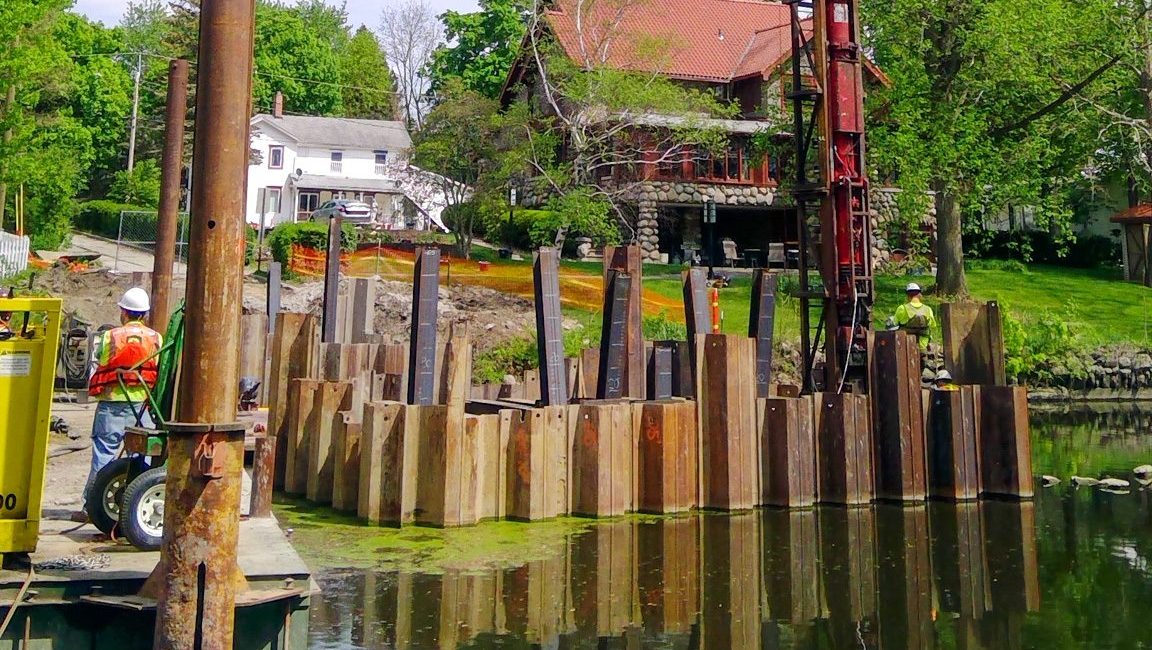
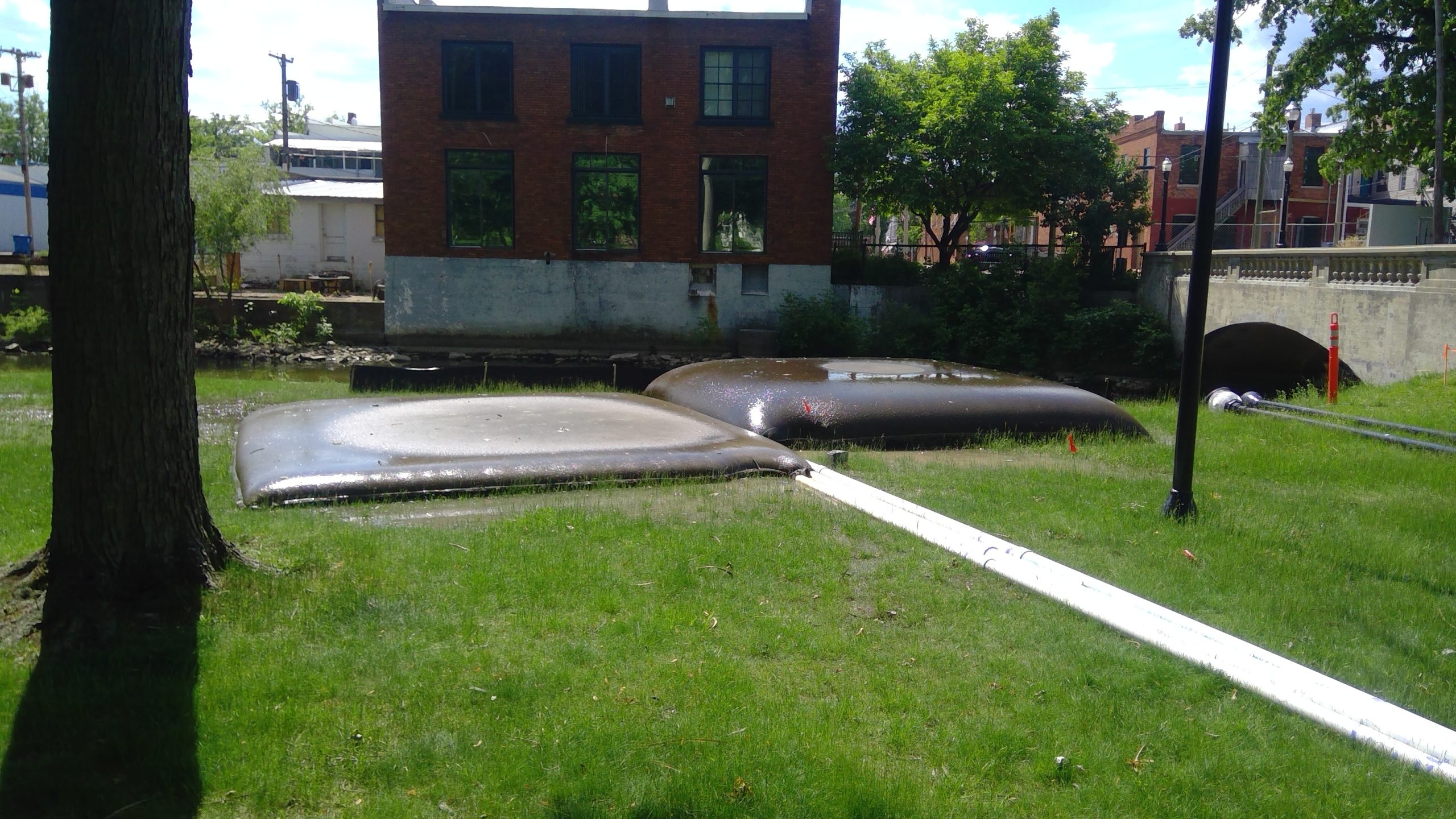
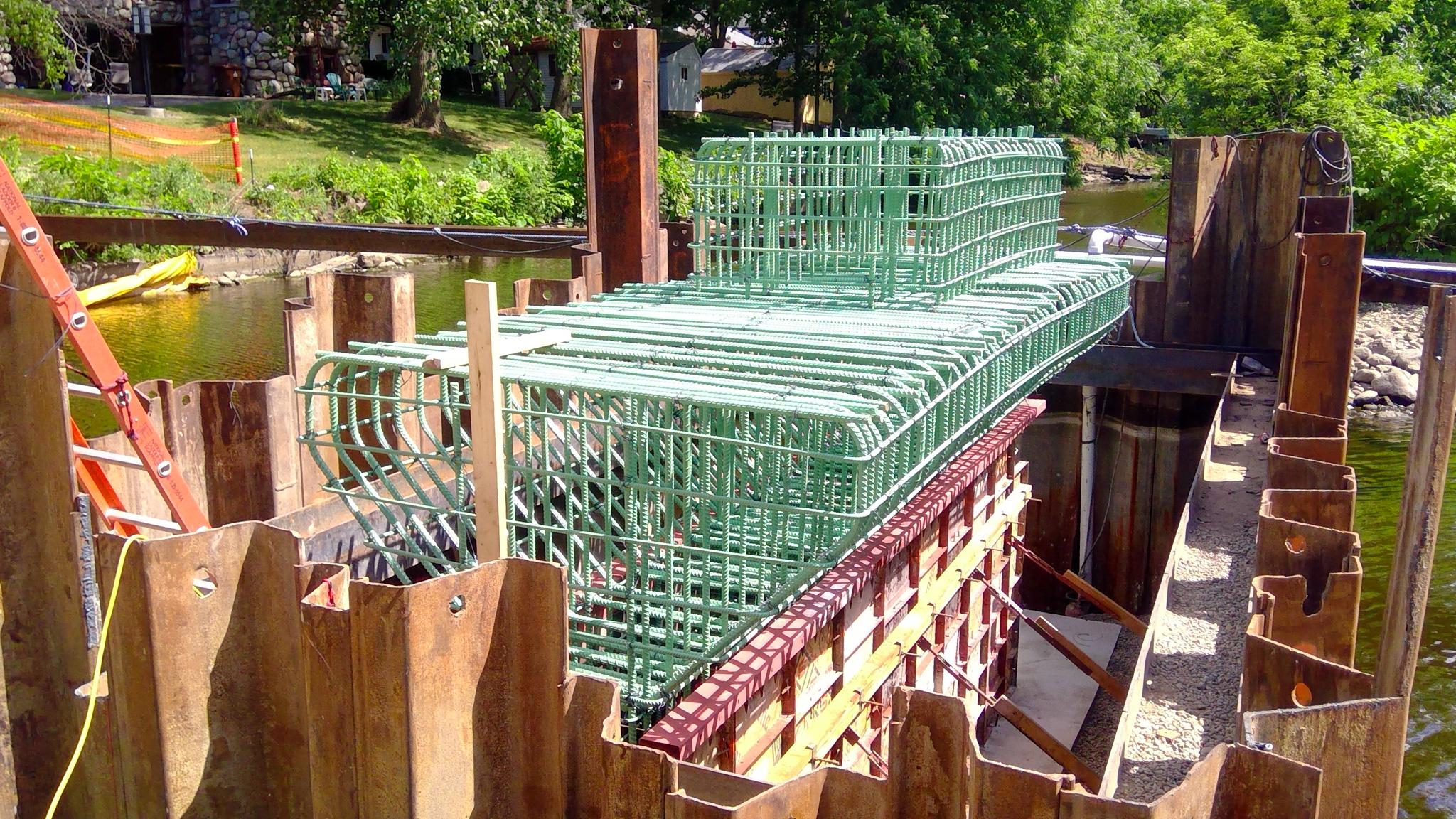
Dewatering is an essential part of certain construction projects, but also to maintain the structure of surrounding land and buildings. If an area isn’t dewatered properly, disasters such as collapses could occur due to the process of erosion happening faster, or unnecessarily. Our team works extremely hard to choose not only the best option for the owner’s budget, but the best option to maintain the integrity of the project site’s surrounding area, and the environmental impact of our required machinery and tools to provide a successful project.
Share this Post


